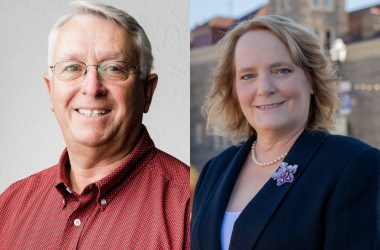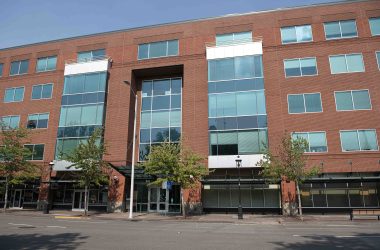
A portion of the information health workers fill out when interviewing an Oregonian diagnosed with Covid. (Oregon Health Authority screenshot)
[ NOTE: Salem Reporter is providing this information free as a community service. You can support dissemination by subscribing. ]
Since the coronavirus pandemic began, Salem Reporter has fielded dozens of questions from people wondering what health workers ask about when someone gets sick.
Interviewing people diagnosed with the virus and getting people who were likely exposed to quarantine at home are crucial for controlling its spread. These interviews also help health workers understand where and how the virus is spreading.
But in many cases – about four in 10 in Oregon – health workers can’t identify where someone caught Covid even after a detailed interview. In the Salem area, it’s about three in 10.
We asked the Marion County Health and Human Services Department and Oregon Health Authority for copies of the scripts and interview questionnaires they use to better understand what information is collected.
DOCUMENTS: Oregon Health Authority case interview script and Marion County contact tracing script
Here are a few key takeaways.
1) Most contact tracing questions focus on workplaces, the home, health care facilities and institutions like schools and prisons
Health workers ask someone with Covid to list “close contacts” at work and from social gatherings, as well as people they live with.
The questionnaire also asks people to identify other places where they’ve been within six feet of someone else for 15 or more minutes, with examples including school, doctor’s office, camp, day care, place of worship, jail, international travel and the military.
Many more specific questions focus on identifying highest-risk cases – those most likely to have a serious case of Covid themselves or spread the virus widely to others, including health care workers, people over 60 and people living in places like dorms, jails or farm labor housing. Each of those categories has its own checkbox, and requires health workers to report the case to a supervisor immediately after an interview.
2) Since mid-July, health officials have asked people about “mass gatherings,” but data is difficult to track
Both Oregon Health Authority and Marion County say they haven’t identified any cases where someone got Covid from attending a protest, rally or political demonstration.
The health authority began asking about gatherings on July 13, spokesman Jonathan Modie said, using the question “Did you attend any gatherings, excluding your workplace, in the 14 days prior to your illness onset or positive test? (e.g., sporting events, parties, mass gatherings, religious services, family reunions, etc.)”
If someone answers yes, the interviewer asks about the date, location and approximate size of the gathering. But that answer is recorded as text, meaning there’s no easy way to scour the state’s database of thousands of cases and count how many people said they attended a protest, family reunion or football game in the timeframe before falling sick.
Modie said people have reported attending a protest or demonstration “a few times” on the form, but health workers haven’t traced any outbreaks or cases back to those gatherings. In general, tracing cases at gatherings of strangers is more difficult than social events among friends or family, since few people know the names and phone numbers of everyone standing next to them at a public event.
3) Tracing cases at restaurants and bars poses a similar challenge
There’s no specific place on the form to ask about people dining out at restaurants or bars. That doesn’t mean interviewers don’t ask – Oregon Health Authority officials have repeatedly said they focus on freeform questions to help people remember where they’ve been in recent days.
But tracing any cases where the virus may spread between strangers dining out is nearly impossible. OPB reported earlier this month such data isn’t specifically tracked. Strangers dining at another table in the same restaurant wouldn’t fall under the definition of “close contacts” (15 minutes or more within six feet of someone), despite evidence the virus can travel further indoors.
4) “Underlying health conditions” is a broad category
Nearly every Oregonian known to have died from Covid had an “underlying health condition.” The form prompts investigators to ask about any health conditions, and records data in several broad categories: chronic lung disease, diabetes, heart disease, kidney disease, liver disease, immunocompromised condition, obesity, neurological/developmental and “other.” To date, about half of Oregonians diagnosed with Covid have had one or more underlying condition, according to the most recent weekly report from OHA.
SUPPORT ESSENTIAL REPORTING FOR SALEM – A subscription starts at $5 a month for around-the-clock access to stories and email alerts sent directly to you. Your support matters. Go HERE.
Contact reporter Rachel Alexander: [email protected] or 503-575-1241.

Rachel Alexander is Salem Reporter’s managing editor. She joined Salem Reporter when it was founded in 2018 and covers city news, education, nonprofits and a little bit of everything else. She’s been a journalist in Oregon and Washington for a decade. Outside of work, she’s a skater and board member with Salem’s Cherry City Roller Derby and can often be found with her nose buried in a book.









